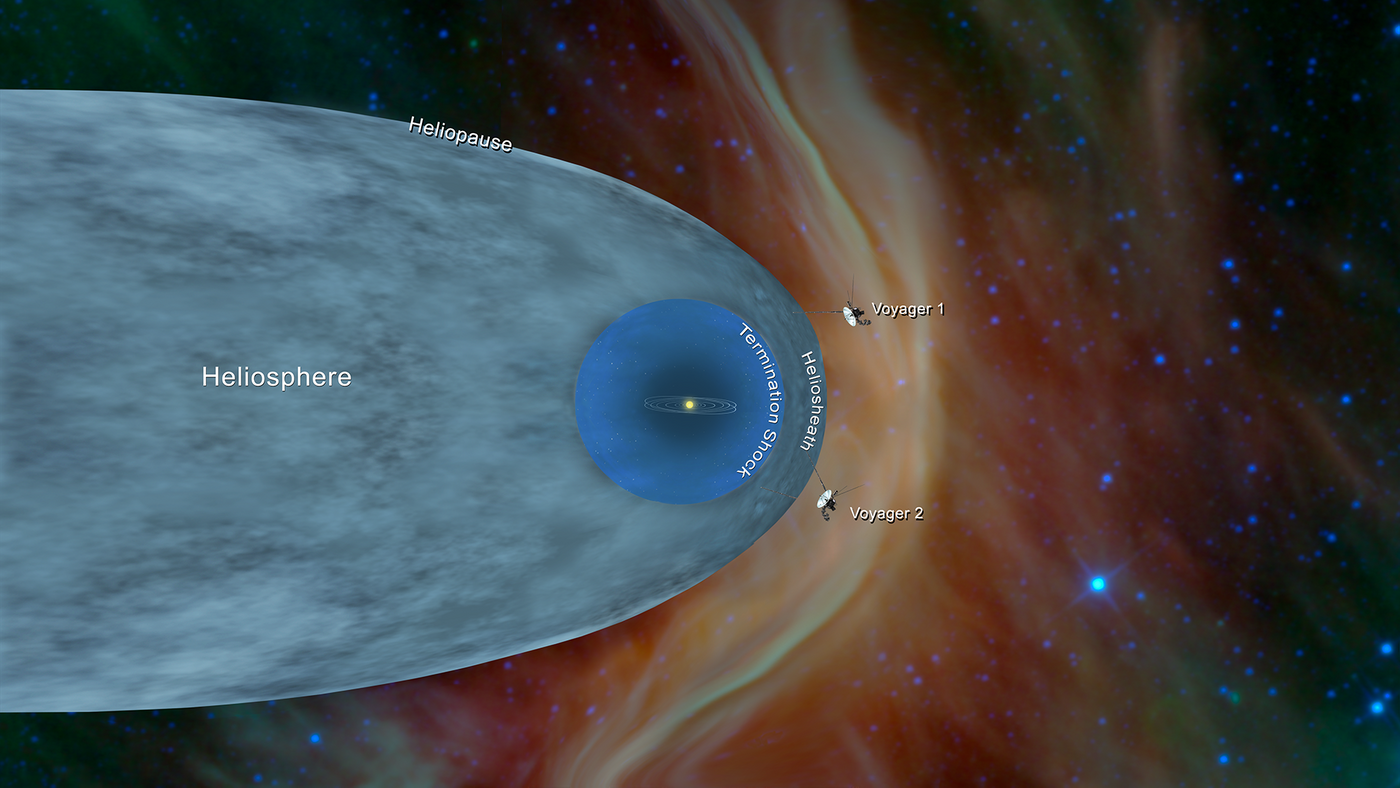NASA's Voyager 2 Probe Leaves the Heliosphere and Enters Interstellar Space
A nostalgic NASA issued a public statement on Monday to announce that its 41-year-old Voyager 2 spacecraft officially left the heliosphere and entered the cold, dark region between the stars known by most as interstellar space.
Voyager 2 is now the second human-made object to achieve this feat, with its twin spacecraft Voyager 1 being the only other human-made object to do so. The latter managed this milestone approximately six years ago.
Image Credit: NASA/JPL-Caltech
As of this writing, Voyager 2 is more than 11 billion miles away from Earth. To put that into perspective, scientists can still receive radio signals from Voyager 2’s communication equipment, but the information takes more than 16.5 hours to reach Earth despite moving at the speed of light.
NASA’s particularly excited about the achievement, not only for what it represents, but also because Voyager 2 carries a fully-functional instrument known as the Plasma Science Experiment (PLS) that will send valuable data about interstellar space back to scientists on Earth. Citing NASA, a similar tool installed on Voyager 1 stopped working in 1980, which means Voyager 2 will provide “first-of-its-kind” data about interstellar space to scientists.
“Voyager has a very special place for us in our heliophysics fleet,” explained Nicola Fox, the director of the Heliophysics Division at NASA. “Our studies start at the Sun and extend out to everything the solar wind touches. To have the Voyagers sending back information about the edge of the Sun’s influence gives us an unprecedented glimpse of truly uncharted territory.”
Related: NASA fires Voyager 1's thrusters for the first time in 37 years
Captivatingly, it was Voyager 2’s PLS instrument that first alerted NASA to the spacecraft’s trek into interstellar space. As the instrument’s name implies, PLS can detect the plasma – or charged particles – that flows from our Sun. On November 5th, NASA discerned a steep decline in the number of particles around the spacecraft; said particles have since dropped off the radar completely.
According to mission scientists, the circumstances above provide the most concrete evidence that Voyager 2 is no longer inside of the heliosphere – the bubble that contains most of our solar system’s matter – and this includes those charged particles emitted by the Sun.
Both Voyager spacecraft can operate outside of the Sun’s influence because they don't depend on solar arrays for power. Instead, they're powered by radioisotope thermal generators (RTG) that create power from decaying radioactive materials. Because of the nature of these power generators, these two spacecraft should continue operating for a long time to come.
“I think we’re all happy and relieved that the Voyager probes have both operated long enough to make it past this milestone,” said Suzanne Dodd, Voyager project manager at NASA’s Jet Propulsion Laboratory (JPL) in Pasadena, California. “This is what we've all been waiting for. Now we’re looking forward to what we’ll be able to learn from having both probes outside the heliopause.”
Without a doubt, it will be fascinating to see what Voyager 2 will teach us about the conditions outside of our heliosphere. More importantly, it will provide scientists with data that Voyager 1 couldn’t, and will be the only human-made spacecraft capable of doing so for a very long time.
Source: NASA









